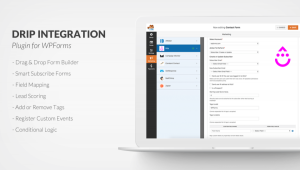Running a Small Contracting Business – 10 Vital Success Tips from the Pros
Even at the best of times, running a small contracting business can be an uphill battle; and it’s a steep mothersucker! You face myriad challenges, some of which you’re ill-equipped to handle. Think of the troubles you battle each day…. employee issues, customer service nightmares, product problems, cash flow that doesn’t, vehicle breakdowns, and shipping that was always supposed to be here yesterday.
The key to success? Minimizing these bumps in the road, and paving a smooth highway to the profit land. There’s got to be an easier way.
Yeah, there is.
To help make your paving job glass smooth, I spoke with several long-time A/V industry vets. They’ve navigated through more than a few chuckholes in their day, and spent years building successful companies in all facets of this difficult business. What they’ve discovered can help you grow yours, make it easier to run, and even squeeze a few extra scheckles out of the ole’ pig once in a while.
NOTE: Doing great work goes without saying, so it’s not included here. However, you can do world’s best work and still end up beating your head against the wall. It’s the other stuff you’ll need to keep the shiny side up and the rolly side down in your contracting business.
Here are 10 tips from the experts that’ll help you smooth the road to a more profitable contracting business.
1 – Put Scalable Systems and Procedures in Place for Your Operations
Get this wrong and growth is a cluster….. you get the picture. One of the custom installation industry’s leading experts on business systems and growth is Paul Starkey.
Paul has been a consistent industry innovator, running some of its most respected companies. He served as VP, then President of Elan, followed by Chief Marketing Officer of Nortek’s Core Brands. Now, he’s looking to redefine how the custom industry works with Vital MGMT. Their mission is bringing large organization data-driven management and business practices to the custom industry, while aggregating leading companies to gain economies of scale, and boost profits.
I bounced a few things off Paul on how companies can improve efficiency and position themselves to be successful in the long term.
WELD2 – What are some of the biggest problems you see with integrators trying to improve efficiency and grow their organizations?
Starkey – “Implementing best practices is very tough. Everybody believes their current practice is best (in their mind). Resisting the temptation that software is the best practice and getting to the root process and/or requirements through documentation begins the process.”
WELD2 – What’s one thing they can do to operate with best business practices?
Starkey – “For most companies, operating through tribal knowledge and having crisp, step-by-step instructions for each employee, on virtually all activities is a key to getting to a best practice. In small companies, having documented baselines for on boarding, training, expanding skills and replicating success is a critical measure.”
WELD2 – What’s the best advice you can add on facilitating growth?
Starkey – “Scale can only be accomplished when habits of the organization occur without re-invention.”
This makes perfect sense. Having to change processes to accommodate growth means you’re back at the bottom of learning curve hill, lookin’ up.
2 – Don’t Forget Marketing
Marketing isn’t all about getting new projects. It’s about having solid qualified lead pipeline for sales to work with. An overlooked benefit: Good marketing delivers better, more profitable projects, not simply more projects.
Marketing is communicating your brand’s value proposition in a way that your market doesn’t just understand, but embraces. To do that, answer marketing’s 3 most important questions:
- Who is my target audience?
- What truly motivates them?
- How can I reach them and communicate my brand’s value proposition?
Jeff Kussard, head of J. Kussard Consulting LLC, is a former market development exec with long tenures at both CI-oriented manufacturers (Russound, Harman), and leading custom install firms. He brings up an excellent point; most dealers pay far too much to acquire their customers.
“The investment made to capture a sale is called the Sales Acquisition Cost. It consists of the related portion of marketing costs plus the direct costs of sales attributed to making the sale. Customer Retention Cost is the cost of gaining additional sales from existing customers. It costs ten times more to make a sale to a new customer than it to make a sale of same value to an existing customer. Most systems integrators invest little to nothing in marketing of any kind.
As a result – and by default – ALL of their sales are burdened with the cost of creating a new customer. Meaning that if you do no marketing at all or, if your marketing is aimed at attracting new customers, your Sales Acquisition Cost is ten times higher than they should be. To save yourself real dough, it just may be a good idea to invest a little to communicate with your past / established customers. Familiarity builds loyalty. Loyalty generates sales “
That’s an illuminating perspective, and one many business owners fail to realize. Focusing on bringing in and endless stream of new customers costs more, and subsequently reduces profit.
Flip it! Shifting some marketing focus to your existing customers is a great way to:
- Shorten your sales cycle
- Reduce sales costs
Both things near and dear to a business owner’s heart. Keeping regular contact is a recipe for growing customer loyalty that cooks up tasty good. Use the same ingredients for that you’ve used for the rest of your business. Deliver value. Know what they want, and give it to them, while simultaneously planting the seed for doing additional business together.
Then, there’s your brand. At WELD2, we like to remind integrators “YOU are the most important brand you sell.” Apologies aside to the myriad CE brands most custom installation firms offer, but it’s you who the customer is really buying. With that in mind, that’s who your marketing should revolve around. The harsh reality is this: The average consumer doesn’t know most of the brands you carry. It’s all about you.
3 – Hire People Smarter and More Talented Than You Are.
Maybe better looking too…. Business luminary Jack Welch, a best selling author and former CEO of General Electric, put that as one of his most vital business principles. While he was at the helm of a mega multinational, it’s just important when you’re pondering the next hire for Jack’s Electrical and Audio LLC.
Jeff Kill, Manager at long time Portland, OR integrator Room Service Home Technologies, says many factors combine to produce the best fit for the company and position. However, it’s the ones you can’t teach that are the most difficult:
“As someone who’s been looking to hire another technician for about a year now…I have a pretty good idea of what fits our business model. Unfortunately it also comes with some governance from the state in the form of Limited Energy Electrical Licensing.
If you pull wire, you must be licensed, and that doesn’t always coincide with a knowledge of our business! It’s been a difficult task. Take the license out of the equation my hire needs to process a real meat and potatoes consumer side to their personality that also has programming skills that can be expanded rather than a real large programming/engineering skill set with little consumer skills. Much easier to teach programming skills than human skills.
In short, integrators need to pair solutions based on a very “technically simple” society and not let the “this will be cooler than they ever imagined” side of them get in the way.”
Andrew Blake, Area Manager for high end Phoenix, AZ based integrator AVAI advises investing in key employees, especially in this day and age of rapidly changing technologies. That’s good for both employer and employee, he notes. As a next step, he says getting key employees invested the business is a powerful way to retain key talent.
“…investing in your employees training, certifications, etc, then maybe even offering a piece of the action or ownership”
Eric Lee, owner of a leading Chicago-area integration firm, Integrated Control Experts, and former CEDIA director, says an employee focus is key to employee retention and en effective organization:
“Family – This is in your commitment to the employee and their family. Ensure that the employee can provide security to his or her family. Everything else is immaterial.”
Key takeaway? Your staff is your firm, really, but only if they’re well chosen and “bought in”. As owner or manager, you’re the backbone. Working together and setting clearly defined goals has always been a constant theme of successful firms, and little has changed. What can you do to facilitate this?
4 – Focus on ROI, ROI, ROI
Do your expenditures deliver a measureable return? Not all will, but most should. Those that don’t should be tied to an activity that will contribute to revenue growth at some point before the dinosaurs return. In a small business, this gets forgotten. Many small business owners fail to take an ROI perspective, either because they have no formal business straining, or aren’t “numbers people”.
Lee had some judicious advice on this, too. As the owner of a successful firm that’s been around for a while and made it through the recent “dark times”, his words carry some weight:
“For me, money is not a renewable resource that grows on a tree in the back yard. You only have so many opportunities based on the resources at your disposal, so you need to maximize your resources. Customer Service is always the best ROI for my money… It is easier to keep a customer than it is to obtain new ones.”
That dovetails perfectly with what Jeff Kussard told me. Keep your customers. It’s not only easier than finding the constant stream of new ones necessary to sustain your business, but a damn sight more cost effective, too. Great customer service is excellent marketing, good business, and the right thing to do.
5 – Cash Is King
You send your kids to college and pay your mortgage with profit, but your business runs on cash. It makes the world go round. Businesses profitable on paper have gone out of business due to poor cash flow.
Here’s a post on the American Express Open Forum with some excellent ways to improve yours and make things run more smoothly in 2015.
The best advice I’ve used for improving cash flow? Stay ahead of the curve. Keep up with billing. As many small contractors can attest, this is often easier said than done. Even so, your customers can’t pay bills they don’t have.
Once they’ve been billed, you know there will be some that don’t pay, even after a friendly reminder. Sadly, that often has nothing to do with ability. Instead it’s a matter of priority. Your invoice just isn’t a priority. Change that, and that money will be in your bank, instead of theirs.
Offer incentives to pay on time, and penalties for failure.
Make sure you’re doing your part, too. Business customers often require certain things to ensure payment. Verify you’re meeting their requirements. Avoiding back and forth equals faster payment.
6 – Document Everything
The devil’s in the details, and when you’re going through those details, it’s a heck of a lot easier if they’re all written down, entered on your tablet, or put in your phone’s job tracker app. In a large part, communication is key to success. That’s never been more true than when running a contracting firm.
Jobs change constantly. Let a few details drop through the cracks and great execution becomes impossible. Job costs skyrocket, and referral chances plummet like a falling safe. Ask Wylie Coyote about that one.
On change orders and T&M projects great documentation becomes doubly important. It’s where the money is….. or isn’t, as the case may be.
AVAI’s Blake weighed in on this, as well. His most important advice on documentation?
“Get the scope clearly defined, and signed off by the client. Contracts with allowances, then T&M if allowance are met are always helpful”
He hit the nail on the head. A clearly defined scope…. failure here can be disastrous, and has bitten more than one contractor in the butt. Here’s hoping you keep yours tooth free.
7 – Know How to Choose the Best Customers
Sure, all customers are desirable in some way. They all contribute revenue, can offer the potential for future business, and possible referrals. Some, however, just aren’t worth the trouble. Yeah, you know it’s true.
There have probably been a few you’d have been better off writing them a check to just get lost! Spotting them early, then parting ways on a good note is going to save both parties more headaches than post-Superbowl Monday.
It’s like any other business activity. Doing a customer’s job should deliver a solid ROI, and there are customers that simply don’t return much for what blood, sweat, and (mostly) tears you put in. The key is being able to spot those from a mile away before you commit to a project.
8 – Plan for the Little Things
Ask any business consultant, large organization exec, or brand leader, and they’ll all extol the virtues of strategic planing. The big stuff and mile-high view is important, but for a small contractor, it’s often the little things that really kick your ass. Planing the day-to-day is what drives efficiency, and profits.
Turning a $ 5.00 part into a $ 500 one because you had to get it shipped overnight and the job slid back a day…. that’ll kill you faster than anything. Even having to run to the store for something quickly adds an extra c-note to whatever you’re grabbing. The extra cost wasn’t in the budget, and gets ripped straight from your bottom line. Raise your hand if it’s happened to you!
Obviously, things can and will pop up. It’s not about that, but dicing your proposal with a fine toothed comb to minimize those little “I forgots”. Even if they’re non-inventory items you don’t directly bill for, include them in the job parts and materials list to be sure they make it to the site when needed, if not before.
9 – Find What Works, and Stay There
“If it ain’t broke, don’t fix it!” Never were truer words spoken, especially in the world of technology contracting. The temptation, and sometimes the requirement to go out on a bleeding edge limb is always right around the corner. Don’t get seduced by it!
Room Service’s Jeff Kill recommends focusing on what’s proven to work and make clients happy:
“As we’ve (Room Service) come through several years of the Wild Wild West of system design and products being used for the first time on our clients, we have come back to an old school approach. Do business with those that have been in business a very long time and deliver repeatable and predictable systems. Then focus more than ever on managing our clients expectations to more parallel what we do.
Taking our clients to that cutting edge is what has eroded consumer confidence over the years. How many times have we heard “I just want to watch TV”. Well, that’s more challenging these days as well, and it’s our job to keep that expectation managed. Our clients by in large are not DIYers and Techies. They just want a responsible team of professionals to lead them through the good, bad and ugly parts of technology and deliver a high quality well executed solution.”
10 – Outsource What Makes Sense
From the top, you can’t be good at everything. Even if you’re a freakin’ rock star, the fact is, you’re too expensive! Here’s an example our own Frank White likes to illustrate: If your company does $ 1,000,000 annually, and you work 50 hours a week, that means 2 things.
1) You work too much!
2) You’re responsible for bringing roughly $ 384 an hour through your door. What’s the most efficient, least expensive way you can do that?
There are things you outsource because it plain makes sense. External providers can do those functions better and less expensively than you can. That means your dollars dedicated to these functions generate a larger ROI (see above) when used for outsourcing them, than if spent doing them internally.
Examples include:
- Vehicle maintenance
- Marketing functions (PR, email marketing, web design and maintenance, blogging, social media, etc)
- Accounting
- Taxes
- Payroll
- Office Cleaning
- Landscaping
- etc.
When was the last time you crawled under one of your vans to change the oil or lube a zerk? Do you have your programmer or hook-up guy do it? Exactly!
Outsourcing is your path to better results, higher profitability, and less time working.
The Bottom Line (Yours)
Finally: It bears repeating; If you’re a custom integrator, the most important brand you sell isn’t Crestron, Runco, or Sonance. It’s yours! That’s what your customers are buying, not an CE brand they’ve likely never heard of. Focus on boosting your own brand equity. Plumbers, electricians, and other trades, too; it’s the same. Your bottom line will thank you.
Running a small contracting business isn’t easy, but it can be one of life’s most frustrating experiences…. or the most rewarding. What have you found that really made a difference, and could help others in your shoes? Let us know; thanks!
Business & Finance Articles on Business 2 Community
http://feedproxy.google.com/~r/B2C_Business/~3/PCJY8tQHnrE/running-small-contracting-business-10-vital-success-tips-01082564
(525)
Report Post






